

The United States is the only industrialized country in the world without universal health care. As a result, most Americans under age 65 receive employer-based health insurance coverage. Under this system, an estimated 28.9 million Americans under 65 were uninsured in 2019 — before the COVID-19 pandemic put over 22 million Americans out of work.
While most of those jobs have since been restored, the official uninsured rate for Americans under 65 in 2020 will likely be higher than the 10.3% rate in 2019 — a continuation of the three-year trend of declining insurance coverage that began in 2017. Still, there are parts of the country where nearly every American under 65 is insured, either through their employer, Medicaid, or directly-purchased coverage.
Using data from the U.S. Census Bureau, 24/7 Wall St. identified the town in every state with the best health insurance coverage. We included cities, towns, villages, and unincorporated communities with populations between 1,000 and 25,000 in our analysis.
The highest uninsured rate among the towns on this list is just 5.2% — about half the comparable national rate. In over a dozen towns on this list, the uninsured rate is effectively zero.
Click here to see the town with the best health insurance coverage in every state
Click here to read our detailed methodology

Alabama: Highland Lakes
> Americans under 65, no health insurance: 1.0% (Alabama: 11.3%)
> Americans under 65, Medicare coverage (or multiple types): 1.9% (Alabama: 4.9%)
> Americans under 65, Medicaid coverage (or multiple types): 1.4% (Alabama: 20.9%)
> Americans under 65, VA coverage (or multiple types): 0.0% reported (Alabama: 1.7%)
> Americans under 65, employer-based insurance (or multiple types): 84.3% (Alabama: 57.8%)
> Americans under 65, direct-purchase insurance (or multiple types): 11.3% (Alabama: 10.5%)
> Americans under 65, Tricare/military insurance (or many types): 4.4% (Alabama: 3.3%)
[in-text-ad]
Alaska: Steele Creek
> Americans under 65, no health insurance: 5.2% (Alaska: 15.3%)
> Americans under 65, Medicare coverage (or multiple types): 0.8% (Alaska: 1.9%)
> Americans under 65, Medicaid coverage (or multiple types): 10.4% (Alaska: 21.1%)
> Americans under 65, VA coverage (or multiple types): 3.7% (Alaska: 3.0%)
> Americans under 65, employer-based insurance (or multiple types): 74.0% (Alaska: 54.4%)
> Americans under 65, direct-purchase insurance (or multiple types): 6.2% (Alaska: 6.9%)
> Americans under 65, Tricare/military insurance (or many types): 18.3% (Alaska: 9.6%)

Arizona: Rincon Valley
> Americans under 65, no health insurance: 2.3% (Arizona: 12.4%)
> Americans under 65, Medicare coverage (or multiple types): 2.1% (Arizona: 2.6%)
> Americans under 65, Medicaid coverage (or multiple types): 3.9% (Arizona: 24.1%)
> Americans under 65, VA coverage (or multiple types): 3.3% (Arizona: 1.5%)
> Americans under 65, employer-based insurance (or multiple types): 81.1% (Arizona: 55.1%)
> Americans under 65, direct-purchase insurance (or multiple types): 4.7% (Arizona: 9.7%)
> Americans under 65, Tricare/military insurance (or many types): 12.3% (Arizona: 2.4%)

Arkansas: Cave Springs
> Americans under 65, no health insurance: 0.8% (Arkansas: 10.1%)
> Americans under 65, Medicare coverage (or multiple types): 1.1% (Arkansas: 5.1%)
> Americans under 65, Medicaid coverage (or multiple types): 4.3% (Arkansas: 28.6%)
> Americans under 65, VA coverage (or multiple types): 1.2% (Arkansas: 1.8%)
> Americans under 65, employer-based insurance (or multiple types): 86.8% (Arkansas: 51.8%)
> Americans under 65, direct-purchase insurance (or multiple types): 8.8% (Arkansas: 10.2%)
> Americans under 65, Tricare/military insurance (or many types): 1.0% (Arkansas: 2.3%)
[in-text-ad-2]

California: Camp Pendleton South
> Americans under 65, no health insurance: 0.0% reported (California: 8.6%)
> Americans under 65, Medicare coverage (or multiple types): 0.0% reported (California: 2.2%)
> Americans under 65, Medicaid coverage (or multiple types): 8.2% (California: 27.1%)
> Americans under 65, VA coverage (or multiple types): 4.1% (California: 0.9%)
> Americans under 65, employer-based insurance (or multiple types): 28.1% (California: 55.7%)
> Americans under 65, direct-purchase insurance (or multiple types): 0.6% (California: 10.9%)
> Americans under 65, Tricare/military insurance (or many types): 88.0% (California: 1.4%)

Colorado: Indian Hills
> Americans under 65, no health insurance: 0.0% reported (Colorado: 8.7%)
> Americans under 65, Medicare coverage (or multiple types): 3.2% (Colorado: 2.1%)
> Americans under 65, Medicaid coverage (or multiple types): 9.2% (Colorado: 19.8%)
> Americans under 65, VA coverage (or multiple types): 1.1% (Colorado: 1.5%)
> Americans under 65, employer-based insurance (or multiple types): 85.0% (Colorado: 60.5%)
> Americans under 65, direct-purchase insurance (or multiple types): 5.2% (Colorado: 11.4%)
> Americans under 65, Tricare/military insurance (or many types): 0.0% reported (Colorado: 3.5%)
[in-text-ad]

Connecticut: Georgetown
> Americans under 65, no health insurance: 0.0% reported (Connecticut: 6.3%)
> Americans under 65, Medicare coverage (or multiple types): 0.0% reported (Connecticut: 2.4%)
> Americans under 65, Medicaid coverage (or multiple types): 9.7% (Connecticut: 21.6%)
> Americans under 65, VA coverage (or multiple types): 0.6% (Connecticut: 0.7%)
> Americans under 65, employer-based insurance (or multiple types): 87.1% (Connecticut: 65.1%)
> Americans under 65, direct-purchase insurance (or multiple types): 5.4% (Connecticut: 9.4%)
> Americans under 65, Tricare/military insurance (or many types): 0.8% (Connecticut: 1.0%)

Delaware: Pike Creek
> Americans under 65, no health insurance: 2.0% (Delaware: 6.8%)
> Americans under 65, Medicare coverage (or multiple types): 1.2% (Delaware: 3.3%)
> Americans under 65, Medicaid coverage (or multiple types): 2.3% (Delaware: 22.5%)
> Americans under 65, VA coverage (or multiple types): 0.5% (Delaware: 1.0%)
> Americans under 65, employer-based insurance (or multiple types): 89.2% (Delaware: 64.4%)
> Americans under 65, direct-purchase insurance (or multiple types): 10.4% (Delaware: 8.6%)
> Americans under 65, Tricare/military insurance (or many types): 0.0% reported (Delaware: 2.6%)
Florida: Heathrow
> Americans under 65, no health insurance: 1.4% (Florida: 15.7%)
> Americans under 65, Medicare coverage (or multiple types): 0.5% (Florida: 3.1%)
> Americans under 65, Medicaid coverage (or multiple types): 2.3% (Florida: 19.2%)
> Americans under 65, VA coverage (or multiple types): 0.4% (Florida: 1.6%)
> Americans under 65, employer-based insurance (or multiple types): 67.1% (Florida: 50.6%)
> Americans under 65, direct-purchase insurance (or multiple types): 29.9% (Florida: 14.5%)
> Americans under 65, Tricare/military insurance (or many types): 0.8% (Florida: 2.7%)
[in-text-ad-2]
Georgia: Druid Hills
> Americans under 65, no health insurance: 2.0% (Georgia: 15.2%)
> Americans under 65, Medicare coverage (or multiple types): 0.4% (Georgia: 3.0%)
> Americans under 65, Medicaid coverage (or multiple types): 2.2% (Georgia: 17.9%)
> Americans under 65, VA coverage (or multiple types): 0.2% (Georgia: 1.5%)
> Americans under 65, employer-based insurance (or multiple types): 83.7% (Georgia: 56.9%)
> Americans under 65, direct-purchase insurance (or multiple types): 15.6% (Georgia: 10.2%)
> Americans under 65, Tricare/military insurance (or many types): 0.9% (Georgia: 3.4%)

Hawaii: Schofield Barracks
> Americans under 65, no health insurance: 0.7% (Hawaii: 4.6%)
> Americans under 65, Medicare coverage (or multiple types): 0.1% (Hawaii: 1.8%)
> Americans under 65, Medicaid coverage (or multiple types): 3.8% (Hawaii: 19.0%)
> Americans under 65, VA coverage (or multiple types): 0.7% (Hawaii: 1.5%)
> Americans under 65, employer-based insurance (or multiple types): 61.6% (Hawaii: 66.3%)
> Americans under 65, direct-purchase insurance (or multiple types): 1.0% (Hawaii: 9.5%)
> Americans under 65, Tricare/military insurance (or many types): 92.1% (Hawaii: 8.8%)
[in-text-ad]

Idaho: Mountain Home
> Americans under 65, no health insurance: 2.3% (Idaho: 12.4%)
> Americans under 65, Medicare coverage (or multiple types): 0.0% reported (Idaho: 2.8%)
> Americans under 65, Medicaid coverage (or multiple types): 0.9% (Idaho: 18.2%)
> Americans under 65, VA coverage (or multiple types): 2.1% (Idaho: 1.6%)
> Americans under 65, employer-based insurance (or multiple types): 29.9% (Idaho: 57.4%)
> Americans under 65, direct-purchase insurance (or multiple types): 9.2% (Idaho: 13.8%)
> Americans under 65, Tricare/military insurance (or many types): 91.0% (Idaho: 2.5%)

Illinois: Sherman
> Americans under 65, no health insurance: 0.0% reported (Illinois: 7.9%)
> Americans under 65, Medicare coverage (or multiple types): 0.4% (Illinois: 2.4%)
> Americans under 65, Medicaid coverage (or multiple types): 6.2% (Illinois: 21.0%)
> Americans under 65, VA coverage (or multiple types): 2.4% (Illinois: 0.8%)
> Americans under 65, employer-based insurance (or multiple types): 88.3% (Illinois: 63.6%)
> Americans under 65, direct-purchase insurance (or multiple types): 8.5% (Illinois: 9.5%)
> Americans under 65, Tricare/military insurance (or many types): 2.4% (Illinois: 0.9%)

Indiana: Shorewood Forest
> Americans under 65, no health insurance: 1.2% (Indiana: 9.8%)
> Americans under 65, Medicare coverage (or multiple types): 0.0% reported (Indiana: 3.2%)
> Americans under 65, Medicaid coverage (or multiple types): 1.6% (Indiana: 19.1%)
> Americans under 65, VA coverage (or multiple types): 0.5% (Indiana: 1.2%)
> Americans under 65, employer-based insurance (or multiple types): 87.4% (Indiana: 64.2%)
> Americans under 65, direct-purchase insurance (or multiple types): 10.5% (Indiana: 8.8%)
> Americans under 65, Tricare/military insurance (or many types): 0.1% (Indiana: 1.2%)
[in-text-ad-2]
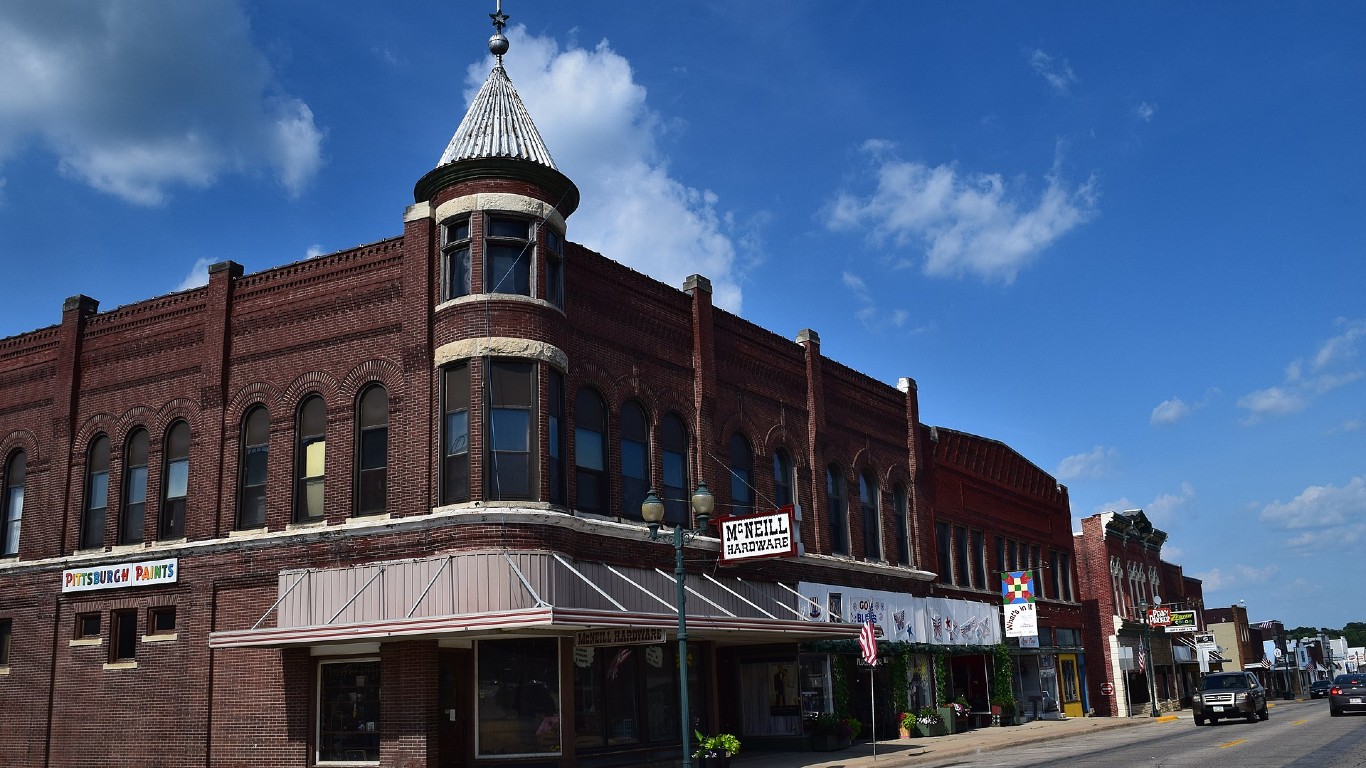
Iowa: Monticello
> Americans under 65, no health insurance: 0.0% reported (Iowa: 5.5%)
> Americans under 65, Medicare coverage (or multiple types): 4.0% (Iowa: 2.5%)
> Americans under 65, Medicaid coverage (or multiple types): 19.3% (Iowa: 20.4%)
> Americans under 65, VA coverage (or multiple types): 0.9% (Iowa: 1.1%)
> Americans under 65, employer-based insurance (or multiple types): 67.2% (Iowa: 67.4%)
> Americans under 65, direct-purchase insurance (or multiple types): 16.8% (Iowa: 10.6%)
> Americans under 65, Tricare/military insurance (or many types): 2.0% (Iowa: 1.3%)

Kansas: Bel Aire
> Americans under 65, no health insurance: 1.8% (Kansas: 10.3%)
> Americans under 65, Medicare coverage (or multiple types): 3.0% (Kansas: 2.7%)
> Americans under 65, Medicaid coverage (or multiple types): 12.8% (Kansas: 14.5%)
> Americans under 65, VA coverage (or multiple types): 0.3% (Kansas: 1.4%)
> Americans under 65, employer-based insurance (or multiple types): 77.9% (Kansas: 65.2%)
> Americans under 65, direct-purchase insurance (or multiple types): 10.2% (Kansas: 11.4%)
> Americans under 65, Tricare/military insurance (or many types): 2.0% (Kansas: 3.4%)
[in-text-ad]
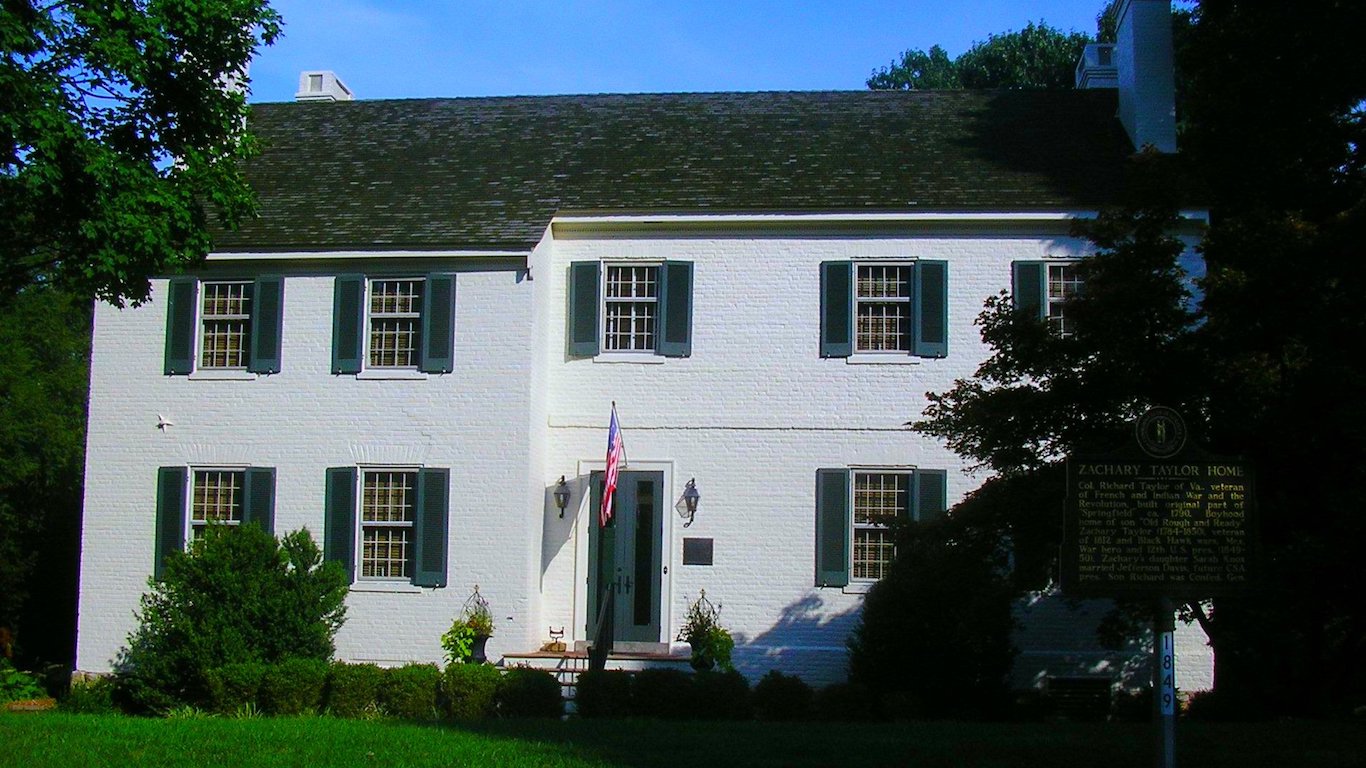
Kentucky: Indian Hills
> Americans under 65, no health insurance: 0.0% reported (Kentucky: 6.7%)
> Americans under 65, Medicare coverage (or multiple types): 0.0% reported (Kentucky: 5.0%)
> Americans under 65, Medicaid coverage (or multiple types): 0.8% (Kentucky: 28.5%)
> Americans under 65, VA coverage (or multiple types): 0.2% (Kentucky: 1.5%)
> Americans under 65, employer-based insurance (or multiple types): 89.4% (Kentucky: 57.3%)
> Americans under 65, direct-purchase insurance (or multiple types): 11.1% (Kentucky: 8.2%)
> Americans under 65, Tricare/military insurance (or many types): 0.0% reported (Kentucky: 2.3%)

Louisiana: Fort Polk South
> Americans under 65, no health insurance: 0.6% (Louisiana: 11.0%)
> Americans under 65, Medicare coverage (or multiple types): 0.2% (Louisiana: 4.0%)
> Americans under 65, Medicaid coverage (or multiple types): 5.2% (Louisiana: 28.4%)
> Americans under 65, VA coverage (or multiple types): 2.1% (Louisiana: 1.3%)
> Americans under 65, employer-based insurance (or multiple types): 19.1% (Louisiana: 52.3%)
> Americans under 65, direct-purchase insurance (or multiple types): 1.1% (Louisiana: 9.6%)
> Americans under 65, Tricare/military insurance (or many types): 89.9% (Louisiana: 2.2%)

Maine: Cumberland Center
> Americans under 65, no health insurance: 0.0% reported (Maine: 9.8%)
> Americans under 65, Medicare coverage (or multiple types): 0.0% reported (Maine: 4.5%)
> Americans under 65, Medicaid coverage (or multiple types): 5.5% (Maine: 19.3%)
> Americans under 65, VA coverage (or multiple types): 0.8% (Maine: 1.8%)
> Americans under 65, employer-based insurance (or multiple types): 85.6% (Maine: 61.5%)
> Americans under 65, direct-purchase insurance (or multiple types): 9.3% (Maine: 11.0%)
> Americans under 65, Tricare/military insurance (or many types): 3.4% (Maine: 2.3%)
[in-text-ad-2]
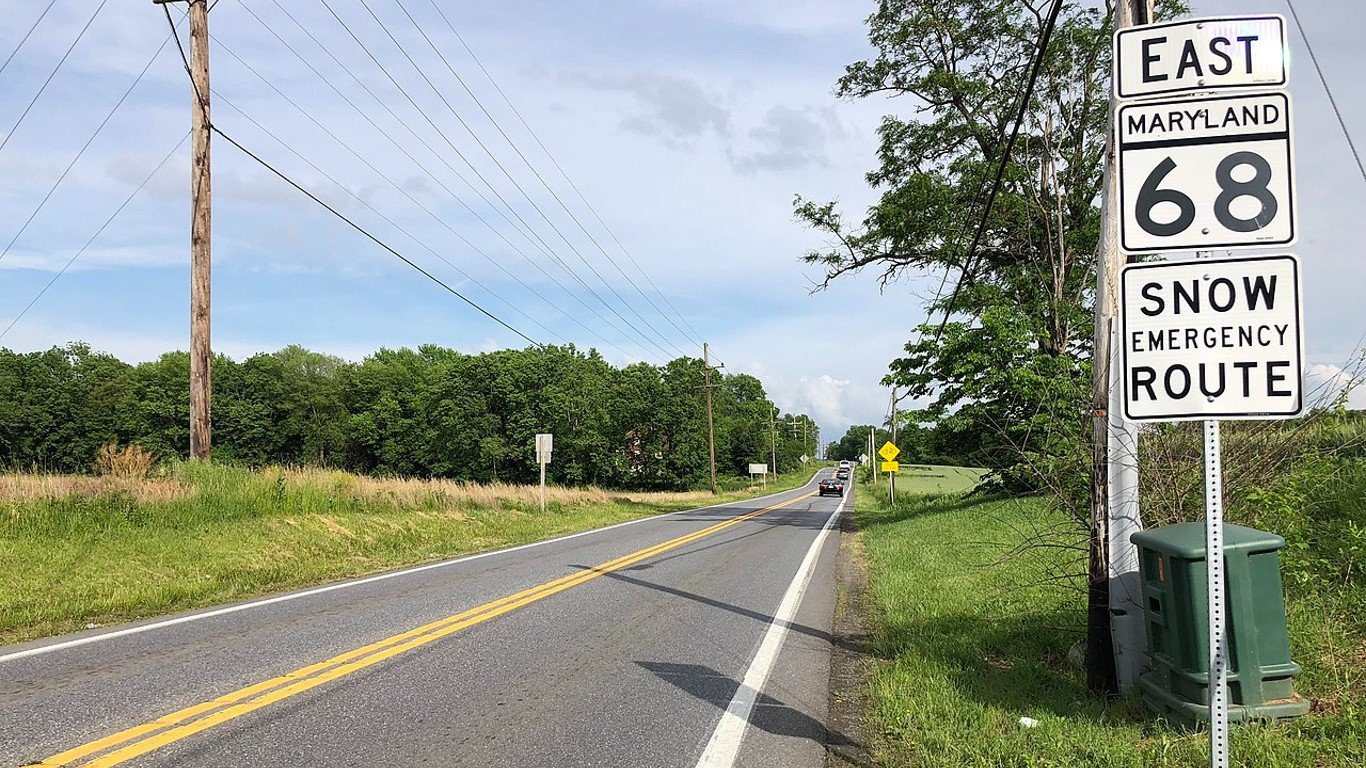
Maryland: St. James
> Americans under 65, no health insurance: 0.0% reported (Maryland: 6.9%)
> Americans under 65, Medicare coverage (or multiple types): 1.3% (Maryland: 2.6%)
> Americans under 65, Medicaid coverage (or multiple types): 7.0% (Maryland: 19.1%)
> Americans under 65, VA coverage (or multiple types): 3.2% (Maryland: 1.2%)
> Americans under 65, employer-based insurance (or multiple types): 89.6% (Maryland: 65.7%)
> Americans under 65, direct-purchase insurance (or multiple types): 6.1% (Maryland: 9.6%)
> Americans under 65, Tricare/military insurance (or many types): 6.0% (Maryland: 3.1%)

Massachusetts: North Pembroke
> Americans under 65, no health insurance: 0.0% reported (Massachusetts: 3.2%)
> Americans under 65, Medicare coverage (or multiple types): 4.7% (Massachusetts: 2.5%)
> Americans under 65, Medicaid coverage (or multiple types): 15.3% (Massachusetts: 24.0%)
> Americans under 65, VA coverage (or multiple types): 0.0% reported (Massachusetts: 0.6%)
> Americans under 65, employer-based insurance (or multiple types): 80.4% (Massachusetts: 67.5%)
> Americans under 65, direct-purchase insurance (or multiple types): 11.8% (Massachusetts: 9.9%)
> Americans under 65, Tricare/military insurance (or many types): 1.1% (Massachusetts: 0.8%)
[in-text-ad]
Michigan: East Grand Rapids
> Americans under 65, no health insurance: 0.6% (Michigan: 6.5%)
> Americans under 65, Medicare coverage (or multiple types): 1.0% (Michigan: 3.7%)
> Americans under 65, Medicaid coverage (or multiple types): 3.1% (Michigan: 24.2%)
> Americans under 65, VA coverage (or multiple types): 0.1% (Michigan: 1.0%)
> Americans under 65, employer-based insurance (or multiple types): 85.3% (Michigan: 63.3%)
> Americans under 65, direct-purchase insurance (or multiple types): 13.5% (Michigan: 9.1%)
> Americans under 65, Tricare/military insurance (or many types): 0.2% (Michigan: 0.9%)
Minnesota: Minnetrista
> Americans under 65, no health insurance: 0.5% (Minnesota: 5.2%)
> Americans under 65, Medicare coverage (or multiple types): 0.3% (Minnesota: 2.1%)
> Americans under 65, Medicaid coverage (or multiple types): 1.8% (Minnesota: 19.4%)
> Americans under 65, VA coverage (or multiple types): 0.3% (Minnesota: 1.0%)
> Americans under 65, employer-based insurance (or multiple types): 87.6% (Minnesota: 68.6%)
> Americans under 65, direct-purchase insurance (or multiple types): 10.4% (Minnesota: 9.9%)
> Americans under 65, Tricare/military insurance (or many types): 0.1% (Minnesota: 1.0%)

Mississippi: University
> Americans under 65, no health insurance: 3.0% (Mississippi: 14.5%)
> Americans under 65, Medicare coverage (or multiple types): 0.3% (Mississippi: 4.7%)
> Americans under 65, Medicaid coverage (or multiple types): 2.3% (Mississippi: 25.1%)
> Americans under 65, VA coverage (or multiple types): 0.2% (Mississippi: 1.4%)
> Americans under 65, employer-based insurance (or multiple types): 83.3% (Mississippi: 51.2%)
> Americans under 65, direct-purchase insurance (or multiple types): 11.2% (Mississippi: 9.5%)
> Americans under 65, Tricare/military insurance (or many types): 0.9% (Mississippi: 3.0%)
[in-text-ad-2]

Missouri: Ladue
> Americans under 65, no health insurance: 0.8% (Missouri: 11.1%)
> Americans under 65, Medicare coverage (or multiple types): 0.9% (Missouri: 3.8%)
> Americans under 65, Medicaid coverage (or multiple types): 0.6% (Missouri: 15.8%)
> Americans under 65, VA coverage (or multiple types): 0.2% (Missouri: 1.4%)
> Americans under 65, employer-based insurance (or multiple types): 86.6% (Missouri: 62.9%)
> Americans under 65, direct-purchase insurance (or multiple types): 14.2% (Missouri: 10.5%)
> Americans under 65, Tricare/military insurance (or many types): 0.0% reported (Missouri: 2.0%)
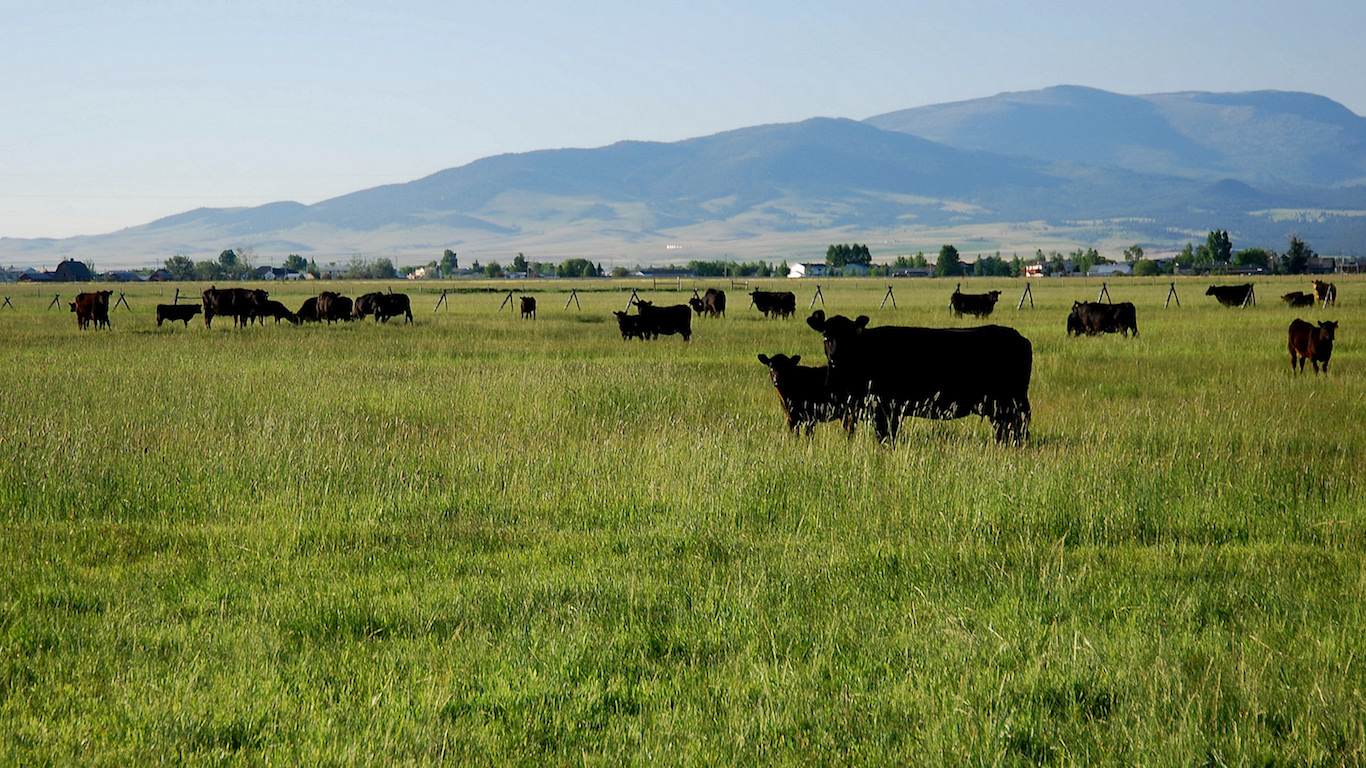
Montana: Helena Valley Northwest
> Americans under 65, no health insurance: 3.0% (Montana: 10.9%)
> Americans under 65, Medicare coverage (or multiple types): 0.7% (Montana: 3.0%)
> Americans under 65, Medicaid coverage (or multiple types): 8.1% (Montana: 21.4%)
> Americans under 65, VA coverage (or multiple types): 4.7% (Montana: 2.1%)
> Americans under 65, employer-based insurance (or multiple types): 83.2% (Montana: 54.9%)
> Americans under 65, direct-purchase insurance (or multiple types): 7.3% (Montana: 13.9%)
> Americans under 65, Tricare/military insurance (or many types): 4.7% (Montana: 3.0%)
[in-text-ad]

Nebraska: Hickman
> Americans under 65, no health insurance: 1.1% (Nebraska: 9.5%)
> Americans under 65, Medicare coverage (or multiple types): 0.8% (Nebraska: 2.2%)
> Americans under 65, Medicaid coverage (or multiple types): 3.1% (Nebraska: 13.4%)
> Americans under 65, VA coverage (or multiple types): 1.8% (Nebraska: 1.4%)
> Americans under 65, employer-based insurance (or multiple types): 73.7% (Nebraska: 66.1%)
> Americans under 65, direct-purchase insurance (or multiple types): 23.8% (Nebraska: 12.9%)
> Americans under 65, Tricare/military insurance (or many types): 3.4% (Nebraska: 2.7%)

Nevada: Nellis
> Americans under 65, no health insurance: 1.7% (Nevada: 12.9%)
> Americans under 65, Medicare coverage (or multiple types): 1.6% (Nevada: 2.5%)
> Americans under 65, Medicaid coverage (or multiple types): 7.7% (Nevada: 20.0%)
> Americans under 65, VA coverage (or multiple types): 1.8% (Nevada: 1.7%)
> Americans under 65, employer-based insurance (or multiple types): 39.0% (Nevada: 58.7%)
> Americans under 65, direct-purchase insurance (or multiple types): 5.3% (Nevada: 9.1%)
> Americans under 65, Tricare/military insurance (or many types): 74.2% (Nevada: 2.7%)

New Hampshire: Hanover
> Americans under 65, no health insurance: 2.4% (New Hampshire: 7.1%)
> Americans under 65, Medicare coverage (or multiple types): 0.8% (New Hampshire: 3.2%)
> Americans under 65, Medicaid coverage (or multiple types): 4.9% (New Hampshire: 14.6%)
> Americans under 65, VA coverage (or multiple types): 0.1% (New Hampshire: 1.3%)
> Americans under 65, employer-based insurance (or multiple types): 67.5% (New Hampshire: 69.8%)
> Americans under 65, direct-purchase insurance (or multiple types): 32.4% (New Hampshire: 9.3%)
> Americans under 65, Tricare/military insurance (or many types): 0.2% (New Hampshire: 1.5%)
[in-text-ad-2]

New Jersey: White House Station
> Americans under 65, no health insurance: 0.0% reported (New Jersey: 9.0%)
> Americans under 65, Medicare coverage (or multiple types): 0.0% reported (New Jersey: 2.4%)
> Americans under 65, Medicaid coverage (or multiple types): 1.3% (New Jersey: 17.7%)
> Americans under 65, VA coverage (or multiple types): 0.0% reported (New Jersey: 0.4%)
> Americans under 65, employer-based insurance (or multiple types): 86.3% (New Jersey: 66.5%)
> Americans under 65, direct-purchase insurance (or multiple types): 13.7% (New Jersey: 8.9%)
> Americans under 65, Tricare/military insurance (or many types): 0.0% reported (New Jersey: 0.7%)

New Mexico: Sandia Heights
> Americans under 65, no health insurance: 1.4% (New Mexico: 11.4%)
> Americans under 65, Medicare coverage (or multiple types): 2.0% (New Mexico: 3.6%)
> Americans under 65, Medicaid coverage (or multiple types): 6.0% (New Mexico: 35.6%)
> Americans under 65, VA coverage (or multiple types): 1.0% (New Mexico: 1.7%)
> Americans under 65, employer-based insurance (or multiple types): 74.1% (New Mexico: 46.4%)
> Americans under 65, direct-purchase insurance (or multiple types): 10.1% (New Mexico: 8.0%)
> Americans under 65, Tricare/military insurance (or many types): 10.3% (New Mexico: 3.3%)
[in-text-ad]
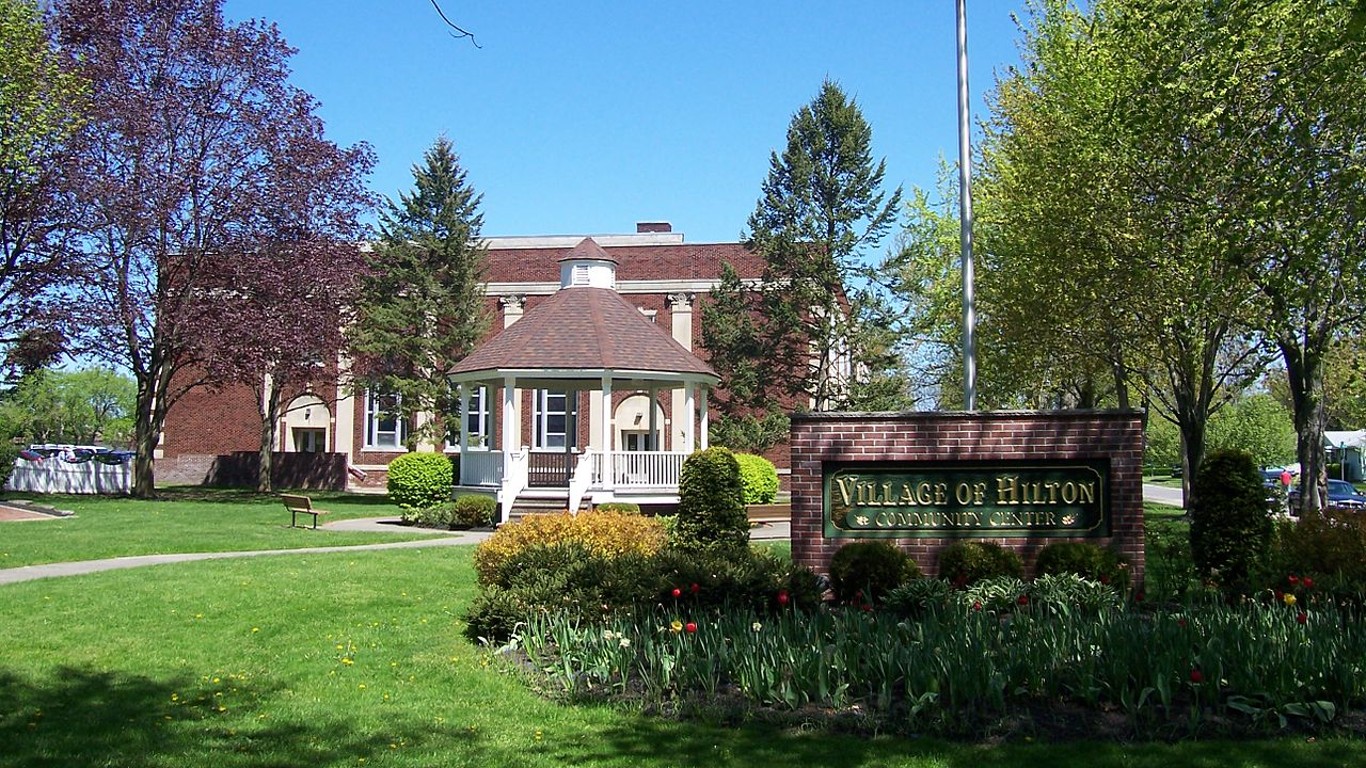
New York: Hilton
> Americans under 65, no health insurance: 0.0% reported (New York: 6.7%)
> Americans under 65, Medicare coverage (or multiple types): 4.2% (New York: 2.8%)
> Americans under 65, Medicaid coverage (or multiple types): 28.3% (New York: 26.9%)
> Americans under 65, VA coverage (or multiple types): 2.0% (New York: 0.6%)
> Americans under 65, employer-based insurance (or multiple types): 68.3% (New York: 59.7%)
> Americans under 65, direct-purchase insurance (or multiple types): 13.7% (New York: 10.8%)
> Americans under 65, Tricare/military insurance (or many types): 1.7% (New York: 0.7%)

North Carolina: Whispering Pines
> Americans under 65, no health insurance: 1.5% (North Carolina: 12.6%)
> Americans under 65, Medicare coverage (or multiple types): 1.7% (North Carolina: 3.5%)
> Americans under 65, Medicaid coverage (or multiple types): 1.7% (North Carolina: 19.4%)
> Americans under 65, VA coverage (or multiple types): 3.9% (North Carolina: 1.7%)
> Americans under 65, employer-based insurance (or multiple types): 34.9% (North Carolina: 55.9%)
> Americans under 65, direct-purchase insurance (or multiple types): 26.3% (North Carolina: 11.7%)
> Americans under 65, Tricare/military insurance (or many types): 47.6% (North Carolina: 3.8%)
North Dakota: Washburn
> Americans under 65, no health insurance: 0.0% reported (North Dakota: 8.5%)
> Americans under 65, Medicare coverage (or multiple types): 3.3% (North Dakota: 2.1%)
> Americans under 65, Medicaid coverage (or multiple types): 3.9% (North Dakota: 11.4%)
> Americans under 65, VA coverage (or multiple types): 1.3% (North Dakota: 1.4%)
> Americans under 65, employer-based insurance (or multiple types): 80.7% (North Dakota: 67.6%)
> Americans under 65, direct-purchase insurance (or multiple types): 18.0% (North Dakota: 14.3%)
> Americans under 65, Tricare/military insurance (or many types): 0.0% reported (North Dakota: 3.4%)
[in-text-ad-2]

Ohio: Montgomery
> Americans under 65, no health insurance: 0.7% (Ohio: 7.2%)
> Americans under 65, Medicare coverage (or multiple types): 1.2% (Ohio: 3.3%)
> Americans under 65, Medicaid coverage (or multiple types): 3.2% (Ohio: 22.8%)
> Americans under 65, VA coverage (or multiple types): 0.0% reported (Ohio: 1.2%)
> Americans under 65, employer-based insurance (or multiple types): 92.6% (Ohio: 64.0%)
> Americans under 65, direct-purchase insurance (or multiple types): 8.3% (Ohio: 7.8%)
> Americans under 65, Tricare/military insurance (or many types): 0.0% reported (Ohio: 1.2%)

Oklahoma: Nichols Hills
> Americans under 65, no health insurance: 1.9% (Oklahoma: 16.5%)
> Americans under 65, Medicare coverage (or multiple types): 2.7% (Oklahoma: 3.9%)
> Americans under 65, Medicaid coverage (or multiple types): 1.3% (Oklahoma: 18.8%)
> Americans under 65, VA coverage (or multiple types): 0.0% reported (Oklahoma: 1.8%)
> Americans under 65, employer-based insurance (or multiple types): 78.8% (Oklahoma: 54.4%)
> Americans under 65, direct-purchase insurance (or multiple types): 19.8% (Oklahoma: 9.9%)
> Americans under 65, Tricare/military insurance (or many types): 0.7% (Oklahoma: 3.1%)
[in-text-ad]
Oregon: Hines
> Americans under 65, no health insurance: 1.0% (Oregon: 8.0%)
> Americans under 65, Medicare coverage (or multiple types): 1.4% (Oregon: 2.8%)
> Americans under 65, Medicaid coverage (or multiple types): 19.0% (Oregon: 24.7%)
> Americans under 65, VA coverage (or multiple types): 4.2% (Oregon: 1.6%)
> Americans under 65, employer-based insurance (or multiple types): 73.0% (Oregon: 59.2%)
> Americans under 65, direct-purchase insurance (or multiple types): 7.2% (Oregon: 11.0%)
> Americans under 65, Tricare/military insurance (or many types): 1.8% (Oregon: 1.4%)
Pennsylvania: Churchville
> Americans under 65, no health insurance: 0.0% reported (Pennsylvania: 6.8%)
> Americans under 65, Medicare coverage (or multiple types): 1.5% (Pennsylvania: 3.2%)
> Americans under 65, Medicaid coverage (or multiple types): 8.4% (Pennsylvania: 21.1%)
> Americans under 65, VA coverage (or multiple types): 0.0% reported (Pennsylvania: 1.0%)
> Americans under 65, employer-based insurance (or multiple types): 87.9% (Pennsylvania: 65.2%)
> Americans under 65, direct-purchase insurance (or multiple types): 7.5% (Pennsylvania: 10.2%)
> Americans under 65, Tricare/military insurance (or many types): 0.8% (Pennsylvania: 1.0%)
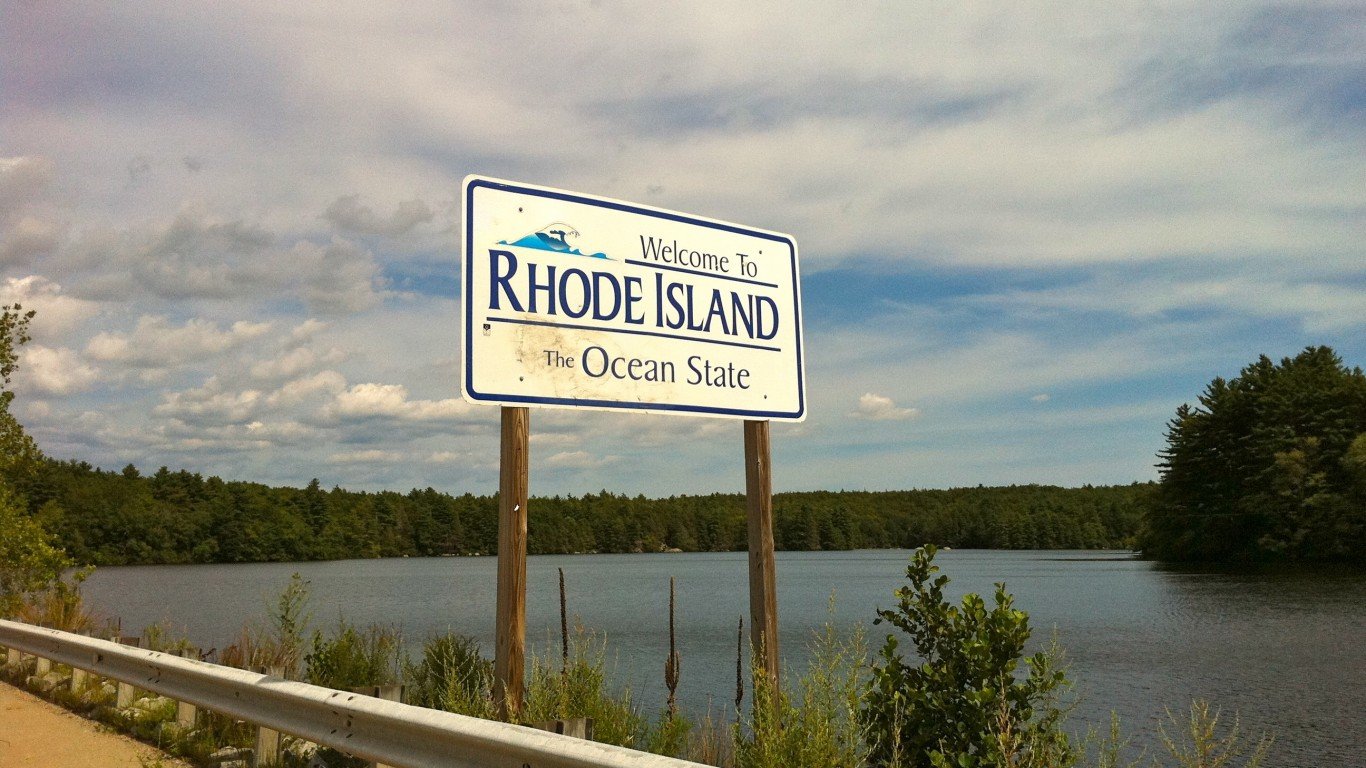
Rhode Island: Hope Valley
> Americans under 65, no health insurance: 0.0% reported (Rhode Island: 5.3%)
> Americans under 65, Medicare coverage (or multiple types): 0.0% reported (Rhode Island: 3.4%)
> Americans under 65, Medicaid coverage (or multiple types): 24.2% (Rhode Island: 23.2%)
> Americans under 65, VA coverage (or multiple types): 0.0% reported (Rhode Island: 1.0%)
> Americans under 65, employer-based insurance (or multiple types): 75.9% (Rhode Island: 64.1%)
> Americans under 65, direct-purchase insurance (or multiple types): 3.1% (Rhode Island: 10.8%)
> Americans under 65, Tricare/military insurance (or many types): 0.0% reported (Rhode Island: 1.4%)
[in-text-ad-2]

South Carolina: Tega Cay
> Americans under 65, no health insurance: 1.2% (South Carolina: 12.6%)
> Americans under 65, Medicare coverage (or multiple types): 1.0% (South Carolina: 3.8%)
> Americans under 65, Medicaid coverage (or multiple types): 2.4% (South Carolina: 20.7%)
> Americans under 65, VA coverage (or multiple types): 0.1% (South Carolina: 1.8%)
> Americans under 65, employer-based insurance (or multiple types): 85.1% (South Carolina: 56.5%)
> Americans under 65, direct-purchase insurance (or multiple types): 8.4% (South Carolina: 10.4%)
> Americans under 65, Tricare/military insurance (or many types): 5.6% (South Carolina: 3.7%)

South Dakota: Groton
> Americans under 65, no health insurance: 2.9% (South Dakota: 11.2%)
> Americans under 65, Medicare coverage (or multiple types): 1.0% (South Dakota: 2.7%)
> Americans under 65, Medicaid coverage (or multiple types): 9.2% (South Dakota: 15.3%)
> Americans under 65, VA coverage (or multiple types): 1.5% (South Dakota: 1.9%)
> Americans under 65, employer-based insurance (or multiple types): 75.1% (South Dakota: 61.1%)
> Americans under 65, direct-purchase insurance (or multiple types): 13.1% (South Dakota: 13.7%)
> Americans under 65, Tricare/military insurance (or many types): 2.7% (South Dakota: 3.4%)
[in-text-ad]

Tennessee: Oak Hill
> Americans under 65, no health insurance: 1.6% (Tennessee: 11.4%)
> Americans under 65, Medicare coverage (or multiple types): 0.3% (Tennessee: 3.8%)
> Americans under 65, Medicaid coverage (or multiple types): 1.3% (Tennessee: 21.6%)
> Americans under 65, VA coverage (or multiple types): 0.0% reported (Tennessee: 1.6%)
> Americans under 65, employer-based insurance (or multiple types): 81.8% (Tennessee: 57.8%)
> Americans under 65, direct-purchase insurance (or multiple types): 16.6% (Tennessee: 10.1%)
> Americans under 65, Tricare/military insurance (or many types): 1.1% (Tennessee: 2.7%)
Texas: Bee Cave
> Americans under 65, no health insurance: 0.7% (Texas: 19.4%)
> Americans under 65, Medicare coverage (or multiple types): 1.1% (Texas: 2.2%)
> Americans under 65, Medicaid coverage (or multiple types): 7.4% (Texas: 17.2%)
> Americans under 65, VA coverage (or multiple types): 1.3% (Texas: 1.3%)
> Americans under 65, employer-based insurance (or multiple types): 78.7% (Texas: 54.5%)
> Americans under 65, direct-purchase insurance (or multiple types): 11.5% (Texas: 9.4%)
> Americans under 65, Tricare/military insurance (or many types): 2.9% (Texas: 2.3%)
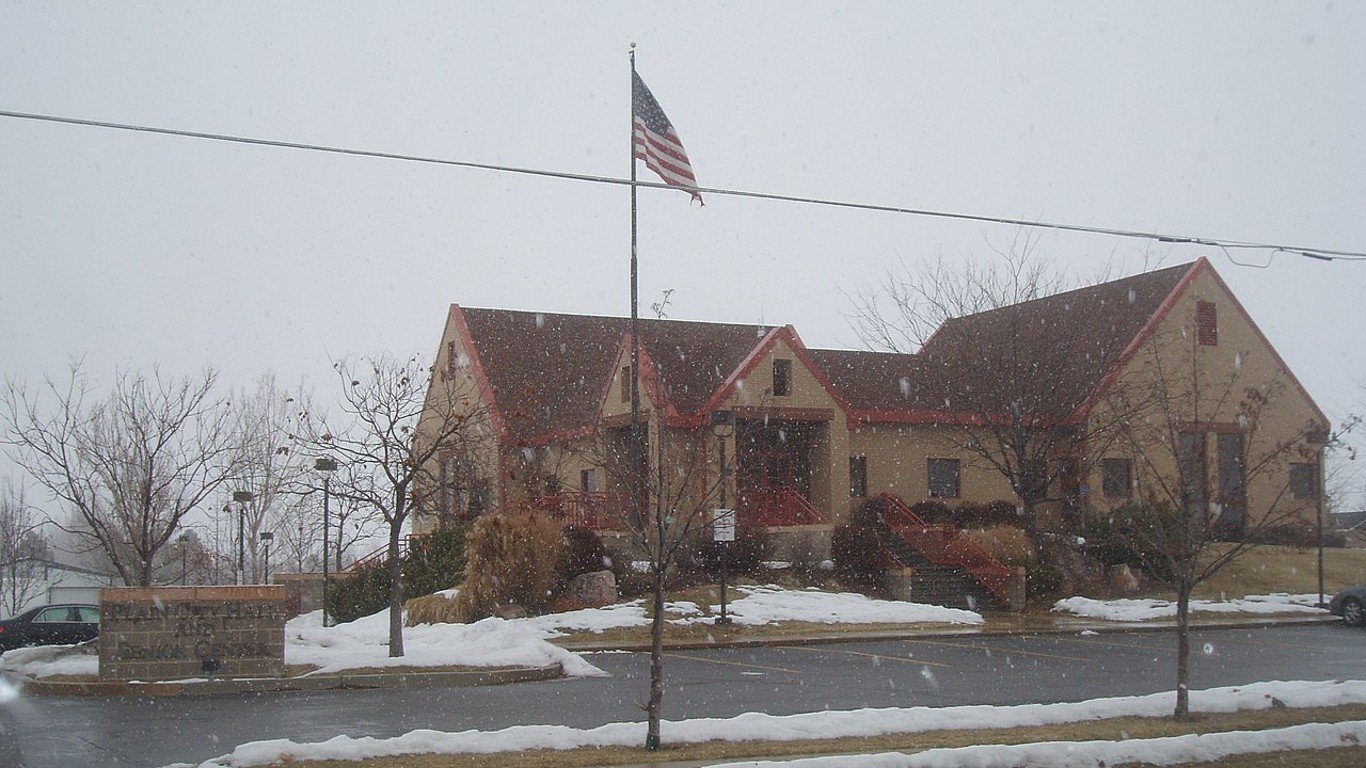
Utah: Plain City
> Americans under 65, no health insurance: 2.1% (Utah: 10.4%)
> Americans under 65, Medicare coverage (or multiple types): 1.7% (Utah: 1.5%)
> Americans under 65, Medicaid coverage (or multiple types): 3.8% (Utah: 10.7%)
> Americans under 65, VA coverage (or multiple types): 0.5% (Utah: 0.8%)
> Americans under 65, employer-based insurance (or multiple types): 84.5% (Utah: 68.4%)
> Americans under 65, direct-purchase insurance (or multiple types): 7.9% (Utah: 12.5%)
> Americans under 65, Tricare/military insurance (or many types): 1.3% (Utah: 1.8%)
[in-text-ad-2]
Vermont: Lyndonville
> Americans under 65, no health insurance: 2.8% (Vermont: 4.8%)
> Americans under 65, Medicare coverage (or multiple types): 5.5% (Vermont: 3.8%)
> Americans under 65, Medicaid coverage (or multiple types): 44.6% (Vermont: 27.1%)
> Americans under 65, VA coverage (or multiple types): 4.5% (Vermont: 1.2%)
> Americans under 65, employer-based insurance (or multiple types): 41.8% (Vermont: 60.5%)
> Americans under 65, direct-purchase insurance (or multiple types): 10.7% (Vermont: 10.1%)
> Americans under 65, Tricare/military insurance (or many types): 1.2% (Vermont: 1.6%)

Virginia: Rivanna
> Americans under 65, no health insurance: 0.0% reported (Virginia: 10.0%)
> Americans under 65, Medicare coverage (or multiple types): 2.1% (Virginia: 2.7%)
> Americans under 65, Medicaid coverage (or multiple types): 10.0% (Virginia: 12.6%)
> Americans under 65, VA coverage (or multiple types): 0.0% reported (Virginia: 2.1%)
> Americans under 65, employer-based insurance (or multiple types): 79.6% (Virginia: 63.9%)
> Americans under 65, direct-purchase insurance (or multiple types): 10.1% (Virginia: 11.0%)
> Americans under 65, Tricare/military insurance (or many types): 0.0% reported (Virginia: 7.1%)
[in-text-ad]

Washington: Bangor Base
> Americans under 65, no health insurance: 0.0% reported (Washington: 7.3%)
> Americans under 65, Medicare coverage (or multiple types): 0.3% (Washington: 2.5%)
> Americans under 65, Medicaid coverage (or multiple types): 2.1% (Washington: 22.0%)
> Americans under 65, VA coverage (or multiple types): 1.0% (Washington: 1.6%)
> Americans under 65, employer-based insurance (or multiple types): 50.8% (Washington: 62.3%)
> Americans under 65, direct-purchase insurance (or multiple types): 1.1% (Washington: 9.7%)
> Americans under 65, Tricare/military insurance (or many types): 97.1% (Washington: 3.6%)

West Virginia: Hinton
> Americans under 65, no health insurance: 0.8% (West Virginia: 7.4%)
> Americans under 65, Medicare coverage (or multiple types): 8.0% (West Virginia: 5.4%)
> Americans under 65, Medicaid coverage (or multiple types): 55.9% (West Virginia: 30.3%)
> Americans under 65, VA coverage (or multiple types): 1.8% (West Virginia: 1.8%)
> Americans under 65, employer-based insurance (or multiple types): 51.4% (West Virginia: 57.1%)
> Americans under 65, direct-purchase insurance (or multiple types): 4.9% (West Virginia: 6.4%)
> Americans under 65, Tricare/military insurance (or many types): 0.5% (West Virginia: 1.6%)

Wisconsin: Lake Wazeecha
> Americans under 65, no health insurance: 0.0% reported (Wisconsin: 6.4%)
> Americans under 65, Medicare coverage (or multiple types): 2.1% (Wisconsin: 2.7%)
> Americans under 65, Medicaid coverage (or multiple types): 13.7% (Wisconsin: 18.0%)
> Americans under 65, VA coverage (or multiple types): 3.9% (Wisconsin: 1.1%)
> Americans under 65, employer-based insurance (or multiple types): 78.5% (Wisconsin: 69.1%)
> Americans under 65, direct-purchase insurance (or multiple types): 11.9% (Wisconsin: 9.4%)
> Americans under 65, Tricare/military insurance (or many types): 0.0% reported (Wisconsin: 1.0%)
[in-text-ad-2]

Wyoming: South Park
> Americans under 65, no health insurance: 0.0% reported (Wyoming: 13.5%)
> Americans under 65, Medicare coverage (or multiple types): 0.0% reported (Wyoming: 2.3%)
> Americans under 65, Medicaid coverage (or multiple types): 0.0% reported (Wyoming: 12.1%)
> Americans under 65, VA coverage (or multiple types): 0.0% reported (Wyoming: 1.8%)
> Americans under 65, employer-based insurance (or multiple types): 80.7% (Wyoming: 64.1%)
> Americans under 65, direct-purchase insurance (or multiple types): 22.6% (Wyoming: 11.4%)
> Americans under 65, Tricare/military insurance (or many types): 0.0% reported (Wyoming: 3.0%)
Methodology
To determine the town with the best health insurance coverage in every state, 24/7 Wall St. reviewed five-year estimates of the percentage of the noninstitutionalized civilian population under 65 without health insurance from the U.S. Census Bureau’s 2019 American Community Survey.
We used census “place” geographies — a category that includes 29,573 incorporated legal entities and census-designated statistical entities. Of those, 29,319 had boundaries that fell within one of the 50 states, while the rest were in the District of Columbia or Puerto Rico.
We defined towns based on population thresholds — having at least 1,000 people and less than 25,000 people — and 13,332 of the places fell within these thresholds.
Towns were excluded if the noninstitutionalized civilian population under 65 was less than 1,000 or if the sampling error associated with a town’s data was deemed too high.
The sampling error was defined as too high if the coefficient of variation — a statistical assessment of how reliable an estimate is — for a town’s under 65 uninsured rate was above 15% and greater than two standard deviations above the mean CV for all towns’ under 65 uninsured rates. We similarly excluded towns that had a sampling error too high for their under 65 noninstitutionalized civilian population, using the same definition.
We selected the under 65 age group because Americans become eligible for medicare at age 65, and the uninsured rate for the population above this age is less than 1% nationwide. However, because the Census doesn’t publish insurance coverage estimates specifically for the under 65 age group, we aggregated the data from more granular age breakdowns.
To ensure each aggregate estimate’s sampling error could be assessed using the definition above, we derived a margin of error for each aggregate estimate using the successive differences replication variance estimation methodology recommended and used by the U.S. Census Bureau.
The remaining 11,039 places were ranked within their state based on their under 65 uninsured rates. To break ties, we used the number of insured people in the same population group.
The share of the population covered by each type of insurance — Medicare, Medicaid, VA, employer, direct-purchase, and Tricare/military — are for the same cohort and are also aggregated from five-year ACS estimates. The estimates reflect people who are covered by that type of insurance alone or in combination with other types on the list. So, when a person is covered by more than one type of insurance, they are included in each group.
Sponsored: Attention Savvy Investors: Speak to 3 Financial Experts – FREE
Ever wanted an extra set of eyes on an investment you’re considering? Now you can speak with up to 3 financial experts in your area for FREE. By simply
clicking here you can begin to match with financial professionals who can help guide you through the financial decisions you’re making. And the best part? The first conversation with them is free.
Click here to match with up to 3 financial pros who would be excited to help you make financial decisions.
Thank you for reading! Have some feedback for us?
Contact the 24/7 Wall St. editorial team.

 24/7 Wall St.
24/7 Wall St.

 24/7 Wall St.
24/7 Wall St.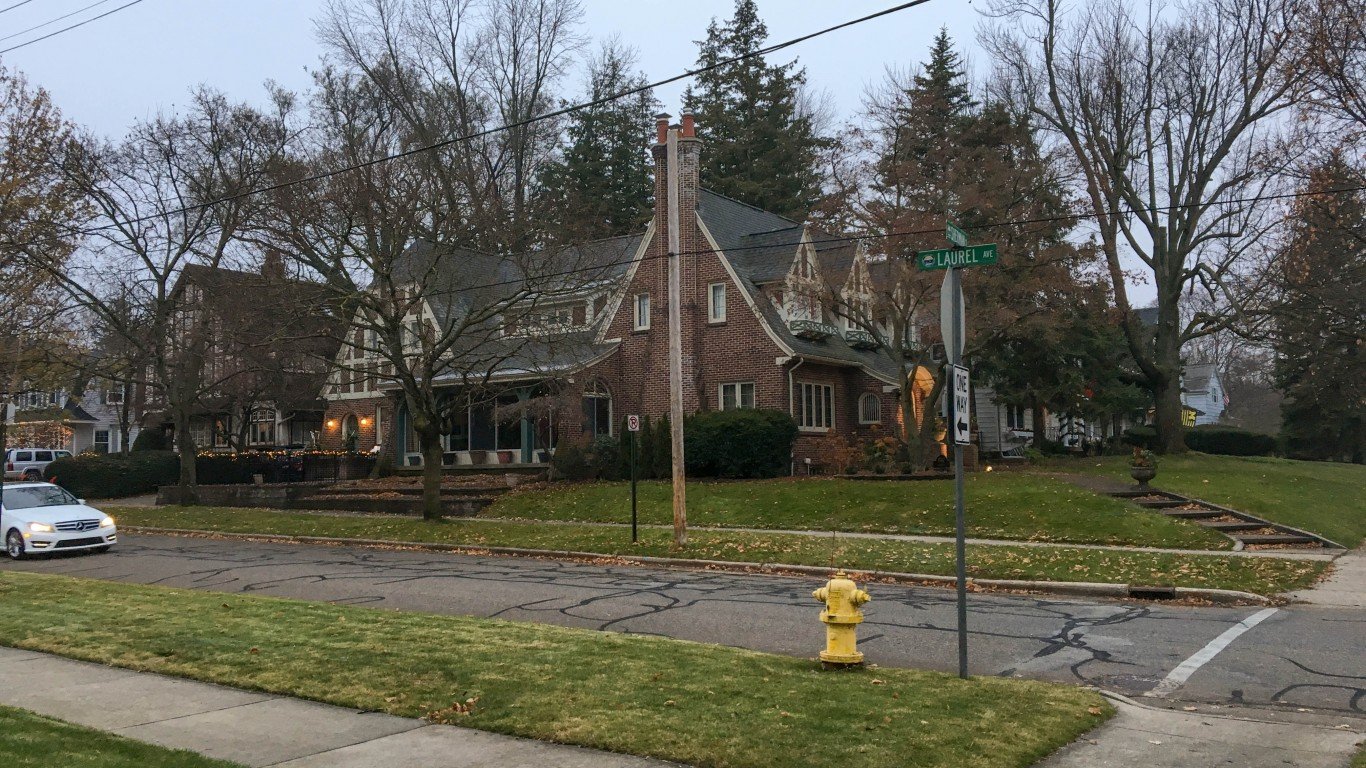



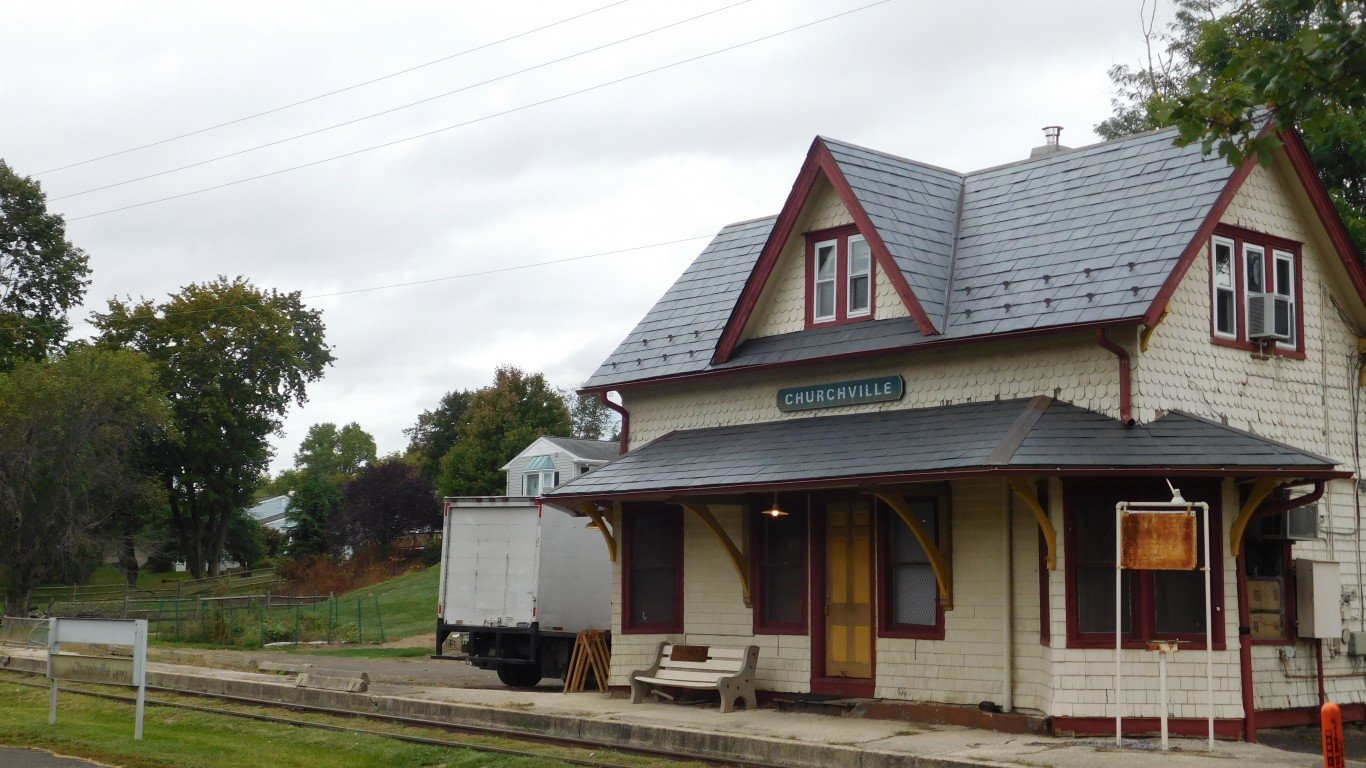

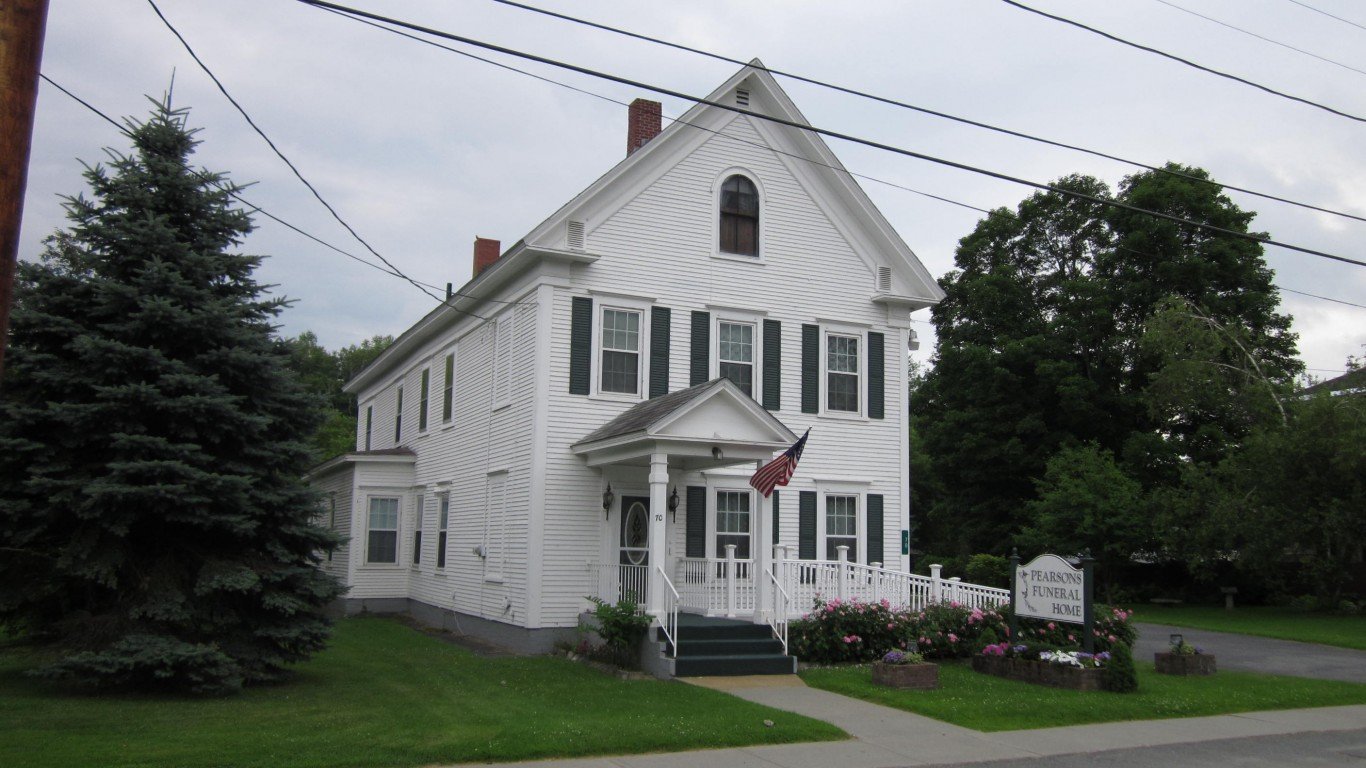
 24/7 Wall St.
24/7 Wall St.


